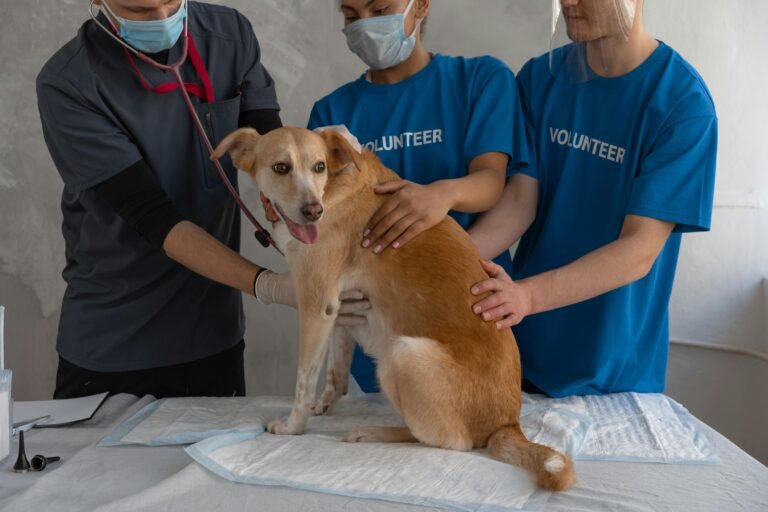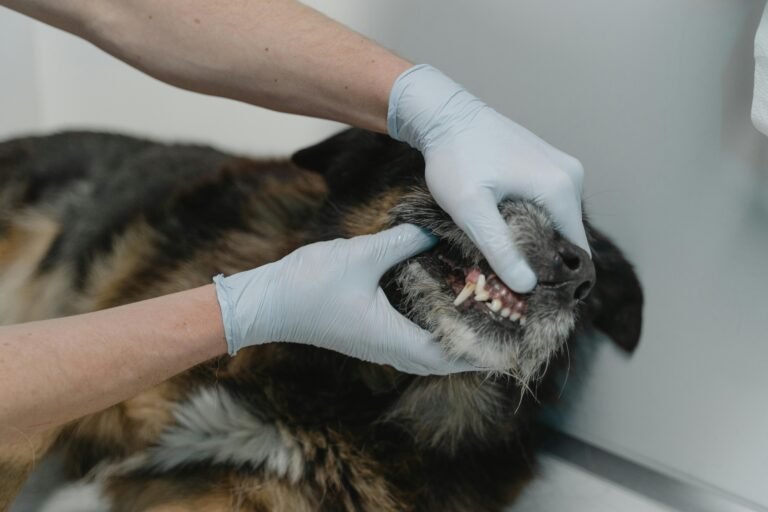Introduction
Obesity is one of the most common health problems in companion animals, and dogs are no exception. Carrying excess weight stresses a dog’s joints and organs, increases the risk of diabetes and heart disease, and can shorten their lifespan. Fortunately, with mindful nutrition, regular exercise, and a strong partnership with your veterinarian, you can help your dog maintain a healthy weight and enjoy a vibrant, active life.
Understanding Canine Obesity
Before you can effectively prevent obesity in your dog, it helps to understand what causes it and why it’s such a serious issue. Obesity occurs when a dog consumes more calories than they use. Just like people, dogs store those extra calories as fat, leading to weight gain.
Health risks associated with canine obesity include:
- Joint and bone problems: Excess weight puts extra pressure on your dog’s joints, increasing the risk of arthritis, ligament injuries, and chronic pain.
- Respiratory and heart disease: Obesity can lead to increased strain on the heart and lungs, making exercise difficult and potentially causing breathing issues or heart disease.
- Diabetes: Overweight dogs are more likely to develop insulin resistance and diabetes, which can require daily insulin injections and careful monitoring.
- Decreased longevity: Studies show that overweight dogs live shorter lives compared to dogs at a healthy weight.
When you recognize these potential risks, preventing obesity becomes an essential part of your dog’s overall health care plan.
Establishing Healthy Eating Habits
The foundation of weight management is proper nutrition. Here’s how to get your dog’s diet on track:
Select a Balanced, High-Quality Diet
Choose a food that meets your dog’s nutritional needs based on their breed, age, and activity level. Look for products that list meat as the first ingredient and avoid foods with excessive fillers like corn or wheat. Your veterinarian can recommend foods formulated for weight management if your dog needs to lose pounds.
Portion Control
Even healthy foods can lead to weight gain if your dog eats too much. Use a kitchen scale or measuring cups to portion out meals rather than estimating. For an average adult dog, dividing daily food into two measured meals helps regulate metabolism and prevents overeating.
Limit Table Scraps and High-Calorie Treats
Human foods like cheese, bacon, or fatty leftovers are extremely high in calories for a dog. Instead of offering table scraps, give healthy alternatives such as:
- Small pieces of lean, cooked meat (without seasoning)
- Fresh veggies like carrots or green beans
- Commercially available low-calorie treats designed for weight management
Establish a Feeding Schedule
Routine feeding times encourage regular metabolism and prevent grazing. Feeding at consistent times also allows you to observe your dog’s appetite—sudden changes in hunger or weight could signal a health issue requiring veterinary attention.
Encouraging Regular Exercise
Physical activity helps burn calories, maintain muscle mass, and improve mental well-being. A combination of structured exercise and play keeps your dog fit and engaged.
Daily Walks
Walking is beneficial for both you and your dog. Aim for at least two brisk walks each day. If your dog is very energetic, consider hiking or longer routes. Be sure to adjust the intensity to your dog’s age and physical abilities; senior dogs or brachycephalic breeds might require shorter, gentler walks.
Interactive Games
Games that stimulate your dog’s mind and body can burn calories and stave off boredom. Try:
- Fetch: Throw a ball or toy for your dog to retrieve. Vary the direction and distance to keep things interesting.
- Tug-of-War: Use a sturdy rope toy to engage your dog’s muscles. Play with clear rules so your dog knows when to start and stop.
- Hide and Seek: Hide treats or toys around the house or yard and encourage your dog to find them, promoting sniffing and problem-solving.
Cross-Training Activities
Mix up your dog’s exercise routine with activities like swimming (low-impact on joints), agility courses (great for mental and physical exercise), or scent work classes. Varying activities not only burns calories but also strengthens different muscle groups and keeps exercise fun.
Monitoring Your Dog’s Progress
To ensure you’re on the right track, monitor your dog’s weight and body condition regularly.
Regular Weigh-Ins
Weigh your dog at least once a month. Smaller dogs can be weighed at home using a bathroom scale; hold your dog, step on the scale, then subtract your own weight. For larger dogs, check with your vet or a pet store with a walk-on scale.
Body Condition Scoring
A body condition score (BCS) is a visual and tactile assessment used by veterinarians. At an ideal weight, you should be able to feel your dog’s ribs without pressing hard and see a defined waist when viewing them from above. If you can’t feel ribs easily or their waistline has disappeared, it’s time to adjust their diet or activity level.
Adjusting as Needed
If your dog is losing or gaining weight too quickly, adjust portion sizes and exercise accordingly. Weight loss should be gradual—about 1% of body weight per week—so their metabolism and muscle mass aren’t compromised. Consult your veterinarian for specific guidance.
Addressing Challenges and Setbacks
Maintaining a dog’s healthy weight isn’t always straightforward. Here are common obstacles and how to overcome them:
- Multiple pets at home: If you have more than one dog or other pets, feeding them separately prevents one from eating another’s food.
- Food-motivated dogs: Some dogs seem perpetually hungry. Puzzle feeders and slow feeders extend mealtime and keep them mentally engaged.
- Using treats for training: Incorporate part of their daily kibble ration as training treats. You can also use small pieces of vegetables or a small portion of their meal as rewards to avoid extra calories.
Partnering with Your Veterinarian
Your veterinarian is an invaluable resource when it comes to weight management. They can:
- Perform regular weight checks and body condition assessments.
- Rule out underlying health issues that might cause weight gain, like hypothyroidism.
- Recommend prescription diets or supplements if needed.
- Guide you through a safe, gradual weight-loss plan.
Regular check-ups allow your vet to detect early signs of obesity-related issues and provide personalized recommendations for your dog.
Mental Stimulation and Weight Control
Dogs also need mental exercise. Boredom can lead to mindless snacking, just like in humans. Offering enrichment activities such as food puzzles, training new tricks, or supervised socialization sessions keeps your dog mentally active and less likely to eat out of boredom. Mental stimulation tires a dog out, which may reduce anxious behaviors that sometimes mimic hunger.
Breed Considerations
Certain breeds are predisposed to weight gain because of their metabolism or build. Labradors, beagles, dachshunds, and golden retrievers are particularly prone to obesity. Conversely, high-energy breeds like border collies and Australian shepherds may burn calories faster. Tailor your feeding and exercise plan to your dog’s breed and lifestyle to maintain a healthy weight.
Conclusion
Preventing obesity in dogs is all about balance: balanced nutrition, balanced activity, and a balanced approach to treats and rewards. By monitoring your dog’s weight and body condition, feeding a nutrient-rich diet, limiting extra calories, and prioritizing daily exercise, you’ll help your furry friend stay lean and lively. A healthy weight isn’t just about appearance—it’s about giving your dog the best chance at a long, comfortable, and joyful life.






